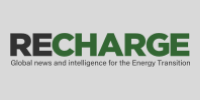
President Donald Trump might believe that wind turbines cause cancer and that people can’t watch TV when the wind isn’t blowing, but that is not preventing his government from announcing plans to achieve global leadership in the energy storage technologies that will improve America’s ability to store its variable wind and solar power.
The US Department of Energy (DOE) has announced the launch of the “Energy Storage Grand Challenge”, which it describes as “a comprehensive program to accelerate the development, commercialization, and utilization of next-generation energy storage technologies and sustain American global leadership in energy storage”.
The vision, the DOE explained, “is to create and sustain global leadership in energy storage utilization and exports, with a secure domestic manufacturing supply chain that is independent of foreign sources of critical materials, by 2030”.
Lithium-ion batteries — which account for around 90% of the world’s battery industry — require raw materials such as cobalt and nickel that are not produced at scale in the US. Some lithium is mined in the US, but at a far smaller scale than the main lithium-producing nations of Australia, Chile, Argentina and China.
According to BloombergNEF, China was producing 73% of the world’s lithium-ion batteries in early 2019, with the US in second place on 12%.
“Through this Grand Challenge, we will deploy the Department’s extensive resources and expertise to address the technology development, commercialization, manufacturing, valuation, and workforce challenges to position the US for global leadership in the energy storage technologies of the future,” said Energy Secretary Dan Brouilette.
The DOE explained the forthcoming process as follows: “As a first step in the Challenge, DOE will soon release requests for information (RFI) soliciting stakeholder feedback on the key questions and issues the Challenge seeks to address.
“Over the coming weeks, DOE will host a series of workshops with key stakeholders to share information about various storage technologies, share about current barriers to deployment, and help shape the work that will bring those technologies to market. This work [will] inform the development [of] a coordinated R&D roadmap to 2030 for a broad suite of storage and flexibility technologies.





